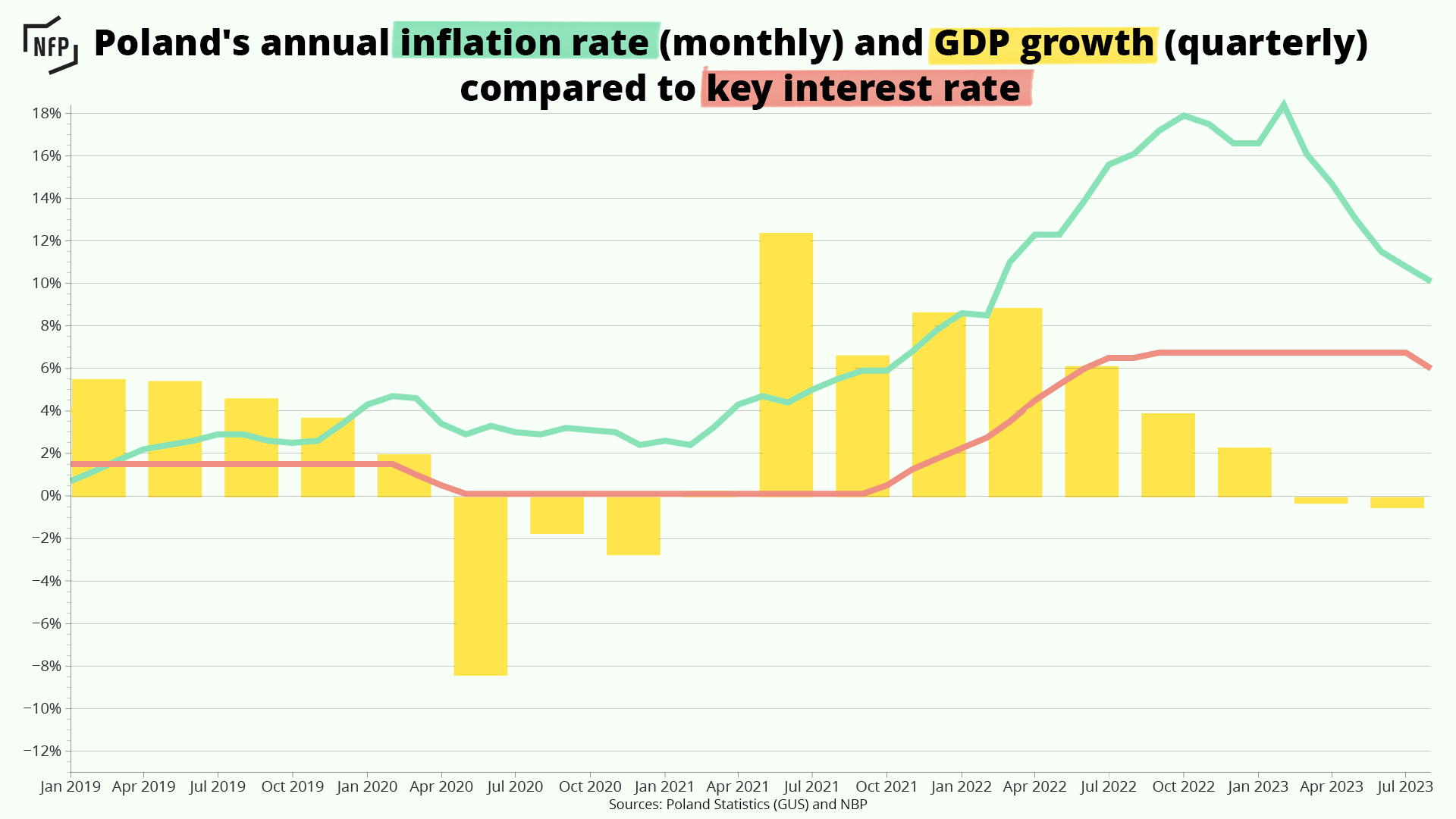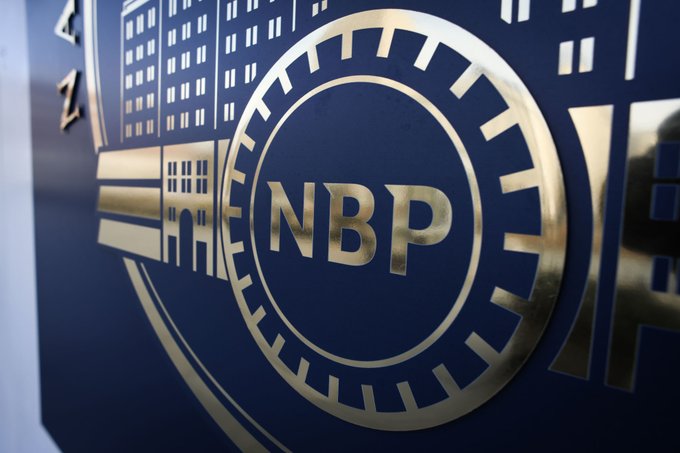Poland’s central bank has cut its benchmark interest rate for the first time in three and a half years, during which time the cost of credit rose to a 20-year-high amid soaring inflation. While a rate cut had been expected today, its size – dropping from 6.75% to 6% – was above market expectations.
In reaction to the National Bank of Poland’s (NBP) decision, the Polish banking sector, for which lower rates mean lower income, started losing on the stock market while the country’s currency, the zloty, weakened against both the dollar and the euro.

The move comes after Poland’s economy entered a technical recession last quarter, having contracted by 0.5% year-on-year in the second quarter and by 0.3% in the first quarter.
At the same time, while inflation has fallen significantly from its 25-year high of 18.4% in February, it remained at just over 10% in August, well above the central bank’s target of 2.5% +/- one percentage point.
Although analysts had expected a rate cut, estimating that Poland would follow in the footsteps of emerging markets and start a monetary easing cycle, the scale of the reduction surprised them. They expected a cut of 25 basis points (0.25 percentage points) today and one or two similar cuts before the end of the year.
The MPC has cut rates by 75bp! The size of the cut is NOT in line with macro conditions. In theory, Poland joins the group of emerging markets that are starting to ease, but it is very different from them: core inflation is falling more slowly than in CE, LATAM had positive real…
— ING Economics Poland (@ING_EconomicsPL) September 6, 2023
“The scale of the cut is not appropriate under (present) conditions,” said analysts from ING Bank Śląski on social media, pointing, among other things, to a slower rate of decline in core inflation than in other countries in the region.
The latest data on core inflation – that is, excluding the most volatile prices such as food or fuel – shows it slowed in July to 10.6% from its peak of 12.3% in April. The NBP estimates that it slowed further in August, said the central bank in a statement published after today’s decision.
“In July 2023, producer prices were lower than a year before, which confirms the fading of external supply shocks and a reduction of cost pressures,” wrote the NBP. “Together with the lower economic activity growth, it will support a further decline in consumer price inflation in the coming quarters.”
Polish households' combined savings have passed 2 trillion zl (€450bn) for the first time, rising 7.4% year on year
But high inflation has eaten into assets' value, with Poland's estimated real interest rate of -10.1% on deposits the 3rd lowest in the EU https://t.co/ZrqXJHebSt
— Notes from Poland 🇵🇱 (@notesfrompoland) August 16, 2023
Following the outbreak of the coronavirus pandemic in the first quarter of 2020, the Polish economy, like others, suffered significant lockdown-induced drops in output.
The size of Poland’s economy fell as much as 8.3% in the second quarter of 2020. To mitigate the impact of lockdowns, the NBP promptly lowered interest rates to a historically low level of 0.1%.
The economy then rebounded quickly, but as a result of broken supply chains, pent-up demand and later also the outbreak of war in neighbouring Ukraine, inflation shot up to its highest level in more than a quarter of a century, forcing the central bank to raise the interest rate to the highest level in 20 years.
A tak to wygląda na wykresie. Dolar drożej o prawie 6 gr. #usdpln https://t.co/5rMUv6DZze pic.twitter.com/bnHYDzi1kS
— macroNEXT (@Macronextcom) September 6, 2023
Since the beginning of this year, inflation has gradually started to slow down from its peak of 18.4% in February, and in August reached 10.1%, with many analysts expecting a single-digit fiture in September.
Today’s rate cut sent all banking stocks down, by as much as 5.92% on the day. The Polish zloty fell 1.1% against the euro to its weakest since January and against the dollar it hit the lowest level since December last year.

Notes from Poland is run by a small editorial team and published by an independent, non-profit foundation that is funded through donations from our readers. We cannot do what we do without your support.
Main image credit: NBP/Twitter

Alicja Ptak is deputy editor-in-chief of Notes from Poland and a multimedia journalist. She has written for Clean Energy Wire and The Times, and she hosts her own podcast, The Warsaw Wire, on Poland’s economy and energy sector. She previously worked for Reuters.



















